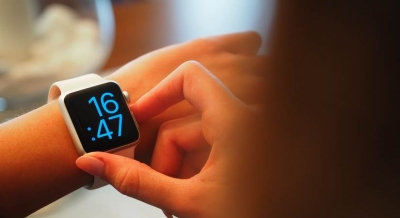New Delhi: Self-driving cars, the Internet of Things, and augmented and virtual reality have all revolutionised a variety of industries in recent years. Wearable technology has been the most remarkable advancement in the market, despite there being many other noteworthy developments. Surprisingly, the two challenging years of seclusion have increased our awareness of technology and our health. We became aware of the value of a strong immune system and the capacity to critically analyse the Internet during the epidemic. People used screens to interact with their loved ones and keep tabs on their Covid statuses.
People are spending more money on nutrition and fitness than ever in the post-pandemic period. We can link to biometric and movement-tracking sensors – thanks to wearable technology. Numerous methods have been used to verify the invention. This explains why the concept is being backed by so many companies.
The future of wearable technology
Technology is constantly evolving. We are exposed to new innovations every minute. In this competitive environment, wearable technology might not be a phenomenon in a few years. Smartwatches shall also endure future ups and downs. In a short period, visual elements shall evolve and may become as common as clothing and footwear.
Energy harvesting, i.e., running devices on solar power or converting body heat and movement into raw power, can change the world of wearable technology. That is the future!
Contribution to the healthcare industry
The healthcare industry has a plethora of futuristic aspirations and wearable technology implementations. Medical devices that monitor real-time biometrics have seized a significant portion of the market. This is a compelling argument for advancing technology for the benefit of health.
Businesses and investors are already working globally to develop and market devices that can monitor, diagnose, and provide remedies for individuals. In addition, efforts have been made to create a device that can be implanted beneath the skin to monitor drugs, blood-oxygen levels, and other critical signs. This is a remarkable achievement in aiding and supporting persons with chronic diseases.
Authentication
Similar to tech giants such as WhatsApp and Tesla they prioritise safety and security by requiring two-factor authentication and digital keys rather than physical keys for user identification and authentication.
Wearable technology in the coming years can make use of the user’s biometrics to authenticate the account instead of adding details and going through a set of information for the same.
Wrapping up!
Everything that operates on the digital radar is the future. Some of us still live in traditional ways, but at the end of the day, we are all tied to technology in some way. It has changed the way we manage our daily routines over time. Our daily activities have been a piece of cake, from ordering groceries online to scheduling medical tests.
While the aforementioned talks are eagerly anticipated by the industry, some forecasts about wearable technology may turn out to be muted. They must be as practical as feasible according to designers. Over time, we expect to notice noticeable improvements in our charming wrist doctors!
–IANS<


Comments are closed.